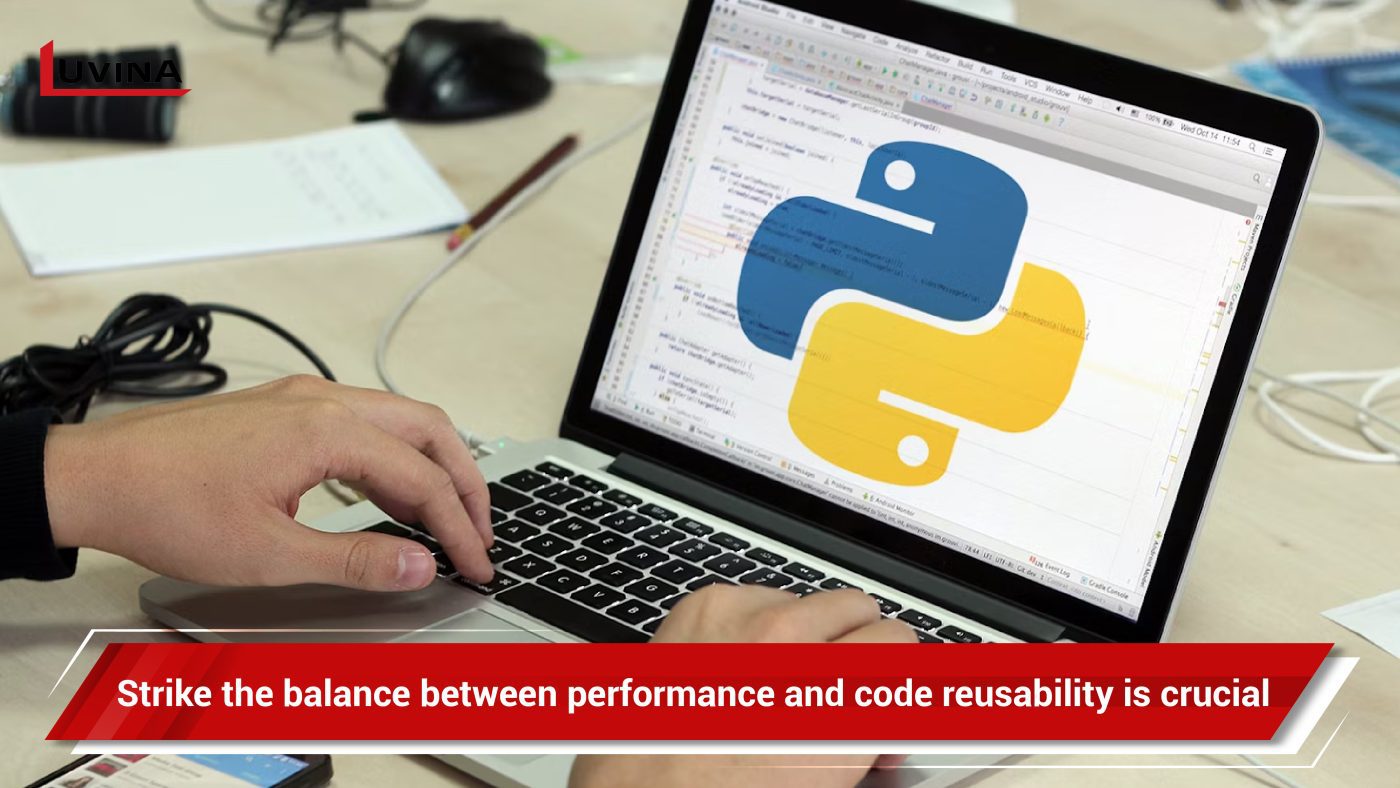The continuous evolution of app development has led to cross-platform development, driven by the pursuit of a larger audience, financial savings, and a more satisfying user experience. Leading the charge in this revolution is Python – a versatile and accessible programming language. Not just a language, Python has built a legacy that spans ages, providing access to countless opportunities. Python’s user-friendly structure has played a key role in the cross-platform revolution. The harmonious merging of platforms is made possible by Python’s ingenuity. Python is the driving force behind this transformative period.
This article will inform the transformative potential of Python in cross-platform app development, highlighting its capabilities, benefits, challenges, and key considerations that enable a novel era of application creation.

Harnessing Python’s Influence in Cross-Platform App Development Using Python
1. Python’s versatility and readability
Python’s reputation as a programming powerhouse is anchored in its hallmark attributes of simplicity, readability, and expressive syntax. These qualities transcend language barriers and facilitate efficient communication between developers. This also makes Python a crucial asset in the realm of cross-platform development. Regardless of the intricate differences between target platforms, Python’s clean and intuitive code stands as the universal language that enables efficient development across the spectrum. This means that whether a developer is creating an app for iOS, Android, or any other platform, the ease of understanding Python’s code remains unwavering, fostering a unified and efficient development experience.
2. How Python’s Strengths Align with Cross-Platform Goals
Cross-platform development hinges on the ability to create a single codebase that functions seamlessly across diverse platforms. Python’s platform independence becomes a cornerstone in this pursuit. With Python, developers can write code once and deploy it across various platforms, saving time and effort while minimizing inconsistencies between versions.
Cross-Platform Development Benefits Through App Development Using Python

1. Explanation of cross-platform development
Cross-platform development heralds a new era in app creation, reshaping the way applications are conceived and crafted. This ingenious technique deftly eliminates the need to create distinct app versions for each platform. The process of coding for iOS, Android, and other platforms in isolation is replaced with a unified approach. Furthermore, apps emerge as harmonious entities, compatible with multiple platforms, and fueled by a singular codebase. This transformation ushers in efficiency, minimizing redundancies and expediting updates. As a result, developers can now concentrate on a unified codebase, streamlining updates and reducing complexities.
2. Advantages of wider audience reach and cost savings
The very essence of this technique redefines the app landscape, enabling creations that seamlessly cater to both iOS and Android users. This pivotal advantage rests on the shoulders of Python’s efficiency. With the energy that was once scattered across multiple projects now consolidated into a singular codebase, the cost of development shrinks significantly. Ultimately, Python becomes the enabler of both accessibility and fiscal prudence, turning the vision of comprehensive app presence into a reality. This not only maximizes audience reach but also translates to significant cost savings, as developers invest their energy in a single codebase rather than maintaining multiple projects.
Developing User-Friendly Interfaces in Cross-Platform App Development Using Python
User interfaces are the bridge between users and applications. With frameworks like Kivy and BeeWare, Python empowers developers to create captivating and user-friendly interfaces. As a result, Python’s flexibility allows for the design of intuitive UIs that align with the expectations of users on different platforms.
Moreover, the magic unfolds in the realm of user experience when Python’s innate flexibility becomes the cornerstone of interface design, permitting the creation of dynamic and intuitive user interfaces. These interfaces adapt to the varied expectations of users across different platforms, enhancing the experience while adhering to the distinctive attributes of each environment.
>> Also Read: Python Mobile App Development Services
Challenges and Considerations in Cross-Platform App Development Using Python

1. Balancing performance and code reusability
In the intricate landscape of cross-platform development, a delicate balance between code reusability and performance emerges as a critical consideration. The allure of crafting a single codebase that caters to multiple platforms can sometimes clash with the imperative for optimal performance. This is why Python’s nature may lead to performance disparities across platforms.
As developers strive for streamlined development through code reuse, they’re tasked with the mission of mitigating potential performance gaps. This mission necessitates sharp decision-making, where the convenience of code uniformity is weighed against the necessity for platform-specific optimization.
2. Overcoming platform-specific challenges
Despite Python’s efforts to abstract platform differences, certain challenges are inherently platform-specific. These challenges may include integrating platform-specific features, managing device-specific resolutions, and optimizing UI elements for different screen sizes. Overcoming these hurdles demands a deep understanding of the intricacies of each platform.
Developers as problem solvers can unite platform differences through ingenious coding bridges. Distinct platform features, even with their uniqueness, seamlessly blend within a single app. Navigating the array of diverse device resolutions is akin to a conductor leading an ensemble of adaptable designs.
Moreover, Python’s remarkable versatility can transform UI challenges into a fluid experience of seamless adaptation. These challenges become stepping stones, not obstacles, as developers start on a mission guided by Python. With solutions that maintain unity across platforms, the journey reflects the artistry of development, where innovation and solutions shape narratives of unified excellence.
>> See more: 5 Reasons Why You Should Develop Android App With Python
Conclusion
In the ever-expanding world of app development, Python emerges as a guiding star in the realm of cross-platform application creation. Its versatility, readability, and platform independence harmonize seamlessly with the goals of cross-platform development. By facilitating wider audience reach, reducing costs, and enhancing user experiences, Python transforms the very landscape of app creation.
Speaking of app development, Luvina Software stands at the forefront of excellence in IT solutions, boasting a team of proficient IT experts who possess a deep-seated mastery of Python. With a wealth of experience and expertise in this versatile programming language, Luvina’s team is primed to craft innovative solutions, harness the full potential of Python, and bring your projects to fruition with precision and ingenuity.
Looking for Python App Developer? Contact Luvina now!








Read More From Us?
Sign up for our newsletter
Read More From Us?
Sign up for our newsletter